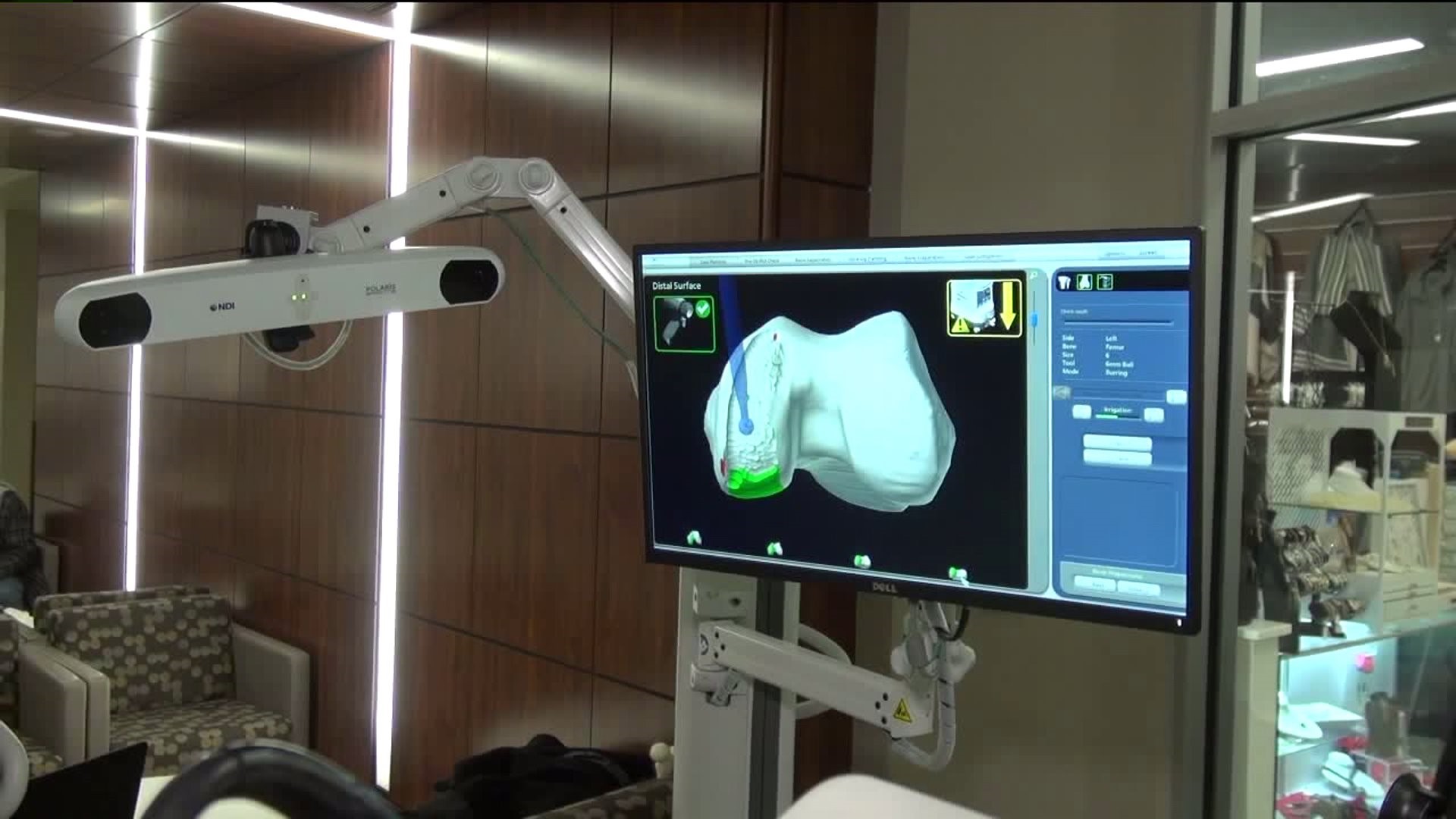SCRANTON, Pa. -- Hip and knee replacement surgeries are fairly common, and doctors say they're getting less invasive, thanks to robotic technology.
One hospital system showed us how it works and why it's making recovery time so much faster.
It looked like a video game demonstration in the lobby of Geisinger Community Medical Center in Scranton, but this is actually an up-close look at a robotic surgery tool now in use for orthopedic surgeries, such as hip and knee replacements.
We talked with Dr. John Mercuri about it this week at Geisinger Orthopaedics and Sports Medicine along West Olive Street in Scranton. He now uses robotic technology for all hip replacement cases. He likes its patient-specific planning.
"Which allows me to plan out the entire surgery before it happens, finished digitally in the computer system, then I use the robot to execute that," Dr. Mercuri said.
One of Dr. Mercuri's first robotic surgery patients was Rosanne Hartland from Taylor, who just turned 64. She was surprised when what she thought was a groin pull turned out to be a fractured hip.
"I haven't had a surgery since I was 7 and it was tonsils," Hartland said. "I have four flights of stairs to get up to my office. I just couldn't hardly do the flights of stairs anymore."
"Classicly, pain that's coming from the hip joint itself is actually felt in the groin area, the front area of the hip joint, and a lot of that pain will radiate down the thigh towards the knee," Dr. Mercuri explained.
The surgery was done in early December. She was out of the hospital in a little more than seven hours and back to work 18 days later.
Dr. Mercuri credits Rosanne's determination as one reason her surgery was so successful.
"I had the biggest smile on my face when I left the house to go to the hospital because I know the pain would be over," she said.
But he also gives some credit to the minimally invasive procedure that left her with less muscle damage and trauma than a traditional surgery, which meant a quicker recovery.
Hospital officials say this offering is right on time; the demand for joint replacements is expected to rise dramatically in the next decade.

